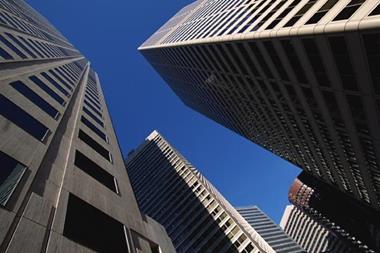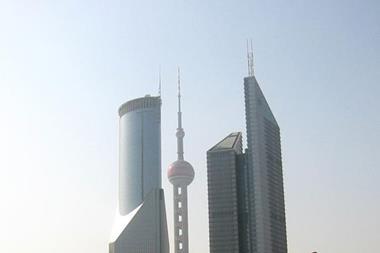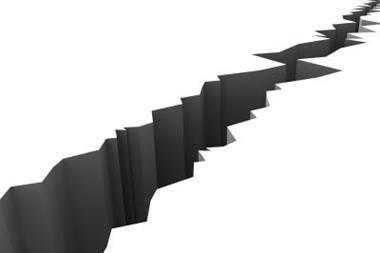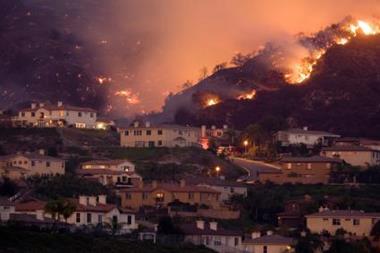Earthquake engineers and catastrophe modellers have considerable data on the relative vulnerability of different construction materials, structural systems and building heights to seismic hazards. However, other factors that affect building stability in an earthquake are more difficult to assess, particularly in emerging markets. By Jayanta Guin and Tao Lai
The insurance industry in China is growing at double digit rates annually. Property and casualty premiums alone grew by 10% in 2006 and overall premium income is expected to increase at a rate of 15% each year at least through 2010, according to the China Insurance Regulatory Commission (CIRC). While the growth in reinsurance premium lags behind at just over 9% per year for the past decade, CIRC has recently indicated its interest in boosting that sector of the industry.
While this impressive growth presents enormous opportunities, they are accompanied by substantial risks – among them catastrophe risk. China is exposed to multiple natural hazards, including earthquakes, typhoons and floods. Of these, earthquakes represent the most geographically widespread threat to the country. During the last two millennia, earthquakes – some with magnitudes greater than 8.0 – have leveled entire cities. In 1976, for example, a magnitude 7.6 earthquake in Tangshan resulted in the loss of more than 240,000 lives and the destruction of more than 9 million buildings, including 93% of residential and 78% of industrial properties in the area.
As urbanisation continues apace, the concentration of exposure is also increasing. We estimate that a recurrence of the Tangshan earthquake today would result in total property losses of about RMB 240 billion ($32 billion) and insured losses of about RMB 1.7 billion ($225 million). As the insurance market matures and the percentage of insured properties increases, the share of total losses that are insured will increase significantly.
AIR first released its earthquake model for China in 2006, and earlier this year we entered into collaboration with the Beijing Institute of Architectural Design (BIAD) to understand better the vulnerability of
buildings in China. Established in October 1949 following the founding of the People’s Republic of China, BIAD is a large, state owned architectural design and consulting institute. Its businesses include city planning, investment planning and large scale public and civil architectural design.
Buildings – the damage mechanism
Assessing the vulnerability of buildings exposed to earthquake ground motion is an essential part of assessing catastrophe risk. It is also highly complex. Earthquake-induced building damage is caused by the building’s dynamic response to ground motion, which can vary dramatically depending on characteristics of both the ground motion and the building.
This complexity is repeatedly observed in the aftermath of earthquakes, where buildings in close proximity to each other, on similar soils and at equal distance from the rupture, respond quite differently to the same seismic event. Figure 1 illustrates the selectivity of ground motion. In the photograph taken after the 1999 Chi-Chi earthquake in Taiwan, one building has toppled while others remain intact.
This selectivity echoes the fundamentals of building dynamics. Buildings vibrate under inertial forces imposed simultaneously by the movement of the ground and the building. These two inertial forces may cancel or augment each other depending on their respective frequencies and phases. When the ground vibrates close to the natural frequency of the building (ie when they resonate), the two forces are additive. The building response is amplified, and more damage can occur.
A building’s natural frequency is a function of its mass and stiffness distribution, which are affected by its construction material, dimension and layout, load bearing and lateral resisting system, and structural details. When the building deforms beyond a certain limit, cracks begin to develop. This leads to stiffness degradation and, in turn, increasingly large deformations. This evolving process actually changes the building’s natural frequency and, therefore, its interaction with ground motion. The task of the catastrophe modeller is to capture appropriately this dynamic interaction between building and ground motion.
Chinese building
There is abundant data available to earthquake engineers and catastrophe modelers on the relative vulnerability of different construction materials, structural systems, (reinforced concrete, steel moment resisting or steel brace frames, for example,) and building heights. Sources include experimental data from universities and research laboratories, published engineering studies and post-event observation data on single sites, and portfolios of buildings.
However, other factors that affect building vulnerability present a greater challenge for the catastrophe modeller – particularly in emerging markets for which data is still limited. These factors include country-specific construction practices and building design, which in the case of China can vary significantly even within the country.
China’s seismic building code, which regulates building design, has evolved over time. To capture this evolution, modellers typically employ a “year built” parameter. The design requirements of the current code (GB 50011-2001) vary according to regional seismic hazard intensity. The general objective is to establish damage thresholds for various levels of ground shaking: no damage for frequent levels of shaking, damage repairable for occasional levels of shaking, and collapse prevention for rare levels of shaking.
In addition, construction quality is related to local socio-economic levels. For example, construction quality in urban areas, where resources are better, is typically superior to that in rural environments.
To enhance the industry’s understanding of how regional variations in building design and construction practice in China impact vulnerability, BIAD has undertaken a series of seismic performance studies, sometimes called pushover analysis. Beginning with detailed specifications and design documents for representative engineered structures conforming to local practices and code, BIAD developed a three dimensional mathematical model of each building type. (See Figure 2)
These models are then input into computer software and stressed. The impact of ground motion is transformed as lateral load applied at floor levels, which increases with the height of the building. The analysis is conducted incrementally until the “virtual” building collapses.
At each incremental state, lateral force is distributed to the members and nodes, or joints, where beams and columns connect. As joints and members fail, the force is redistributed to the elements that remain functional. The pushover analysis captures the building’s ductility, or capacity to resist collapse.
Using the research findings
Preliminary results of the BIAD’s seismic analyses confirm that buildings being constructed following national design criteria are considerably more earthquake resistant in Beijing than buildings in, for example, Shanghai or Chongqi. Further, reinforced concrete and steel buildings in Beijing are comparable in their earthquake performance to similar buildings in California, but the same building types in Shanghai and Chongqi are weaker than buildings designed in the central and eastern United States.
We will use the results of the BIAD studies to refine our building capacity curves. Results can also help refine estimates of the relative vulnerability of different building classes in different locationsacross China.
In addition, the BIAD will provide an extensive database containing building information such as the number of storeys, year built and structural type, and their maximum deformation when subjected to expected ground motions. This will enable the refinement of the estimated relative vulnerability of the same building type built in different years under different code requirements.
Postscript
Jayanta Guin is a senior vice president at
AIR Worldwide and a civil engineer.
Tao Lai is a project manager at AIR Worldwide
and a mechanical engineer.
www.air-worldwide.com


















